![“Our province has been shaped by the Atlantic Ocean. It can be extremely cold, extremely unforgiving. If it works here, it will work anywhere. The technology we [develop and] use here can be adapted to anywhere else in the world. We are adaptive, we're nimble, we're problem solvers. And at the end of the day, we are collaborative."
Minister Andrew Parsons, Industry, Energy & Technology, Newfoundland & Labrador, Canada. Photo courtesy the office of Minister Andrew Parsons](https://images.marinetechnologynews.com/images/maritime/w200h200padcanvas/province-been-shaped-153427.jpg)
NL Government Helps Power Regional Maritime, Offshore Energy, Subsea Tech Cluster
, including icebergs,” said Parsons. “We are known as the east coast energy capital, and we cannot overstate the importance of oil to our province. In addition, we export our [offshore oil and gas] expertise all over the world.” As it moves now into aquaculture and marine biotechnology, Parsons observes: “It's amazing, for our province as small as we are, we're certainly batting above our weight when it comes to the ideas that are created here, set up here and then brought elsewhere.”Banking on SuccessThe cumulative ocean industry is the driver of the Newfoundlan

Apply Now for the Fourth Ocean Startup Challenge
to identify gaps and opportunities in specific areas within the ocean sector. These discussions are reflected in the Challenge Statements, which include areas of focus such as: sustainable seafood, renewable ocean energy, decarbonized shipping and marine transportation, marine bioresources and biotechnology, and autonomous vessels and robotics.Applications for the 2024 Ocean Startup Challenge are open until September 15, 2024. Information sessions in both French and English will be held throughout the summer to assist prospective applicants in preparing strong submissions. Session dates include:
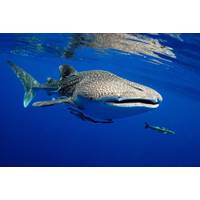
Nations Secure UN Global High Seas Biodiversity Pact
the latest round of negotiations, which began on Feb. 20, with developing countries calling for a greater share of the spoils from the "blue economy", including the transfer of technology.An agreement to share the benefits of "marine genetic resources" used in industries like biotechnology also remained an area of contention until the end, dragging out talks.The European Commission, the executive arm of the European Union, hailed the agreement as a "historic moment"."With the agreement on the UN High Seas Treaty, we take a crucial step forward to preserve the marine
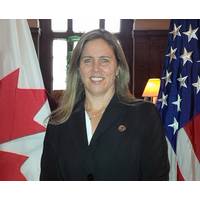
Q&A: Growing Blue Economy Opportunities for US Exporters in Canada
industries in the blue economy, including shipbuilding, shipping/ports, marine transportation, and fisheries & processing. Specifically, lucrative opportunities for U.S. exporters exist in the emerging industries such as offshore wind, ocean renewable energy, safety & surveillance and marine biotechnology. Now is a good time for U.S. companies that start building relationships and branding themselves in Canada and seek partnership opportunities with Canadian companies or feeding into the country’s supply chain. ITA is also working to help women and minority-owned firms achieve success through
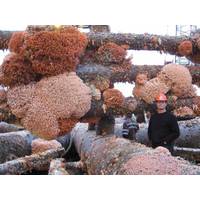
Decommissioning: Corals on Oil Platforms Could Kick-start the Deep-sea Ecosystem
and restore marine ecosystems. Murray Roberts is Professor of Applied Marine Biology & Ecology in the School of Geosciences at the University of Edinburgh where he moved in October 2016. Before this, he was Professor of Marine Biology and Director of the Centre for Marine Biodiversity & Biotechnology at Heriot-Watt University. He studied Biology at the University of York before a PhD at the University of Glasgow examining nitrogen cycling in the Anemonia viridis symbiosis. Since 1997 his work on cold-water corals and deep-sea biology has taken him to sites off the UK, Norway, Ireland, and

Professor Raquel S. Peixoto: The Coral Warrior
a Red Sea Microbial Vault (inspired by the Microbiota Vault) to learn more, collect, store, and analyze microbes from the Red Sea. Professor Peixoto believes that the Red Sea could hold answers for the aid and recovery of corals around the world. She received her Ph.D. in microbiology, M.S. in biotechnology and B.S. in biological sciences from the Federal University of Rio de Janeiro, Brazil.Watch Professor Raquel Peixoto on Marine Technology TV
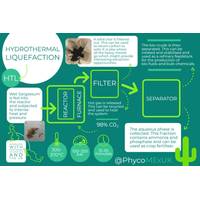
PML: Invasive Seaweed Finds New Role as Coastal Cleanup Hero
Exeter and the University of Bath, has developed a cheap and simple way of creating biofuel and fertilizer from seaweed, aiding in its cleanup and the removal of plastic from tourist beaches in the Caribbean and Central America.The study, recently published in the Journal of Chemical Technology and Biotechnology, aims to remove invasive seaweed, like Sargassum, which is costly to cleanup and deters tourists, while also producing biofuel in a sustainable way. Professor Mike Allen of the University of Exeter and Plymouth Marine Lab explained the need for an economically and environmentally viable method:
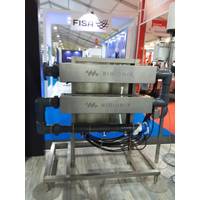
Technology Helps Fight Red Tide Threat
in which the products are transported to avoid the spread of these harmful organisms.Sernapesca has approved Bioionix, Inc's BIOIONIX 6500 and 8500 systems for the elimination of this threat to a large segment of the country’s economy.Hans Kossmann, noted marine biologist and master in biotechnology management, and partner and director of Patagonia Wellboats in Chile, has worked with and tested the BIOIONIX systems to develop the application. According to Kossmann, “The Bioionix systems are superior to other treatment methods to assure food safety. They have the potential of significantly

Sonardyne Hires Paull as Business Development Manager
farms and marine energy devices, and aquaculture operations, as companies look to diversify and countries seek to grow their energy and food production.“Increasingly our oceans are being looked at as engines of growth – be it in renewable energy, aquaculture, mineral resources and even biotechnology. Sonardyne’s growing portfolio of underwater acoustic positioning, inertial navigation, wireless communications and sonar technology systems are extremely well placed to serve and support these evolving, growing and important markets,” Paull said.Sonardyne’s systems are already
 December 2025
December 2025





